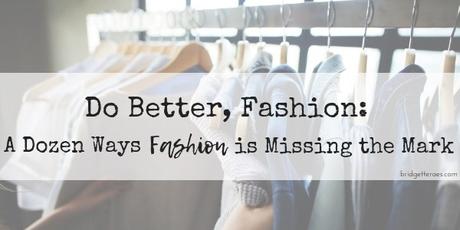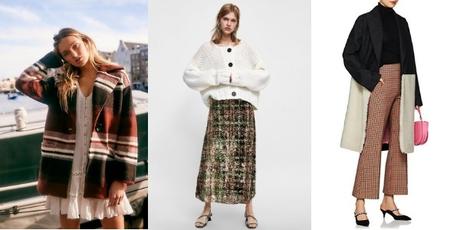
I had a pivotal conversation with the owner of a small retailer in North Carolina nearly 20 years ago that changed the course of my career. I was visiting the Raleigh based store, Cameron Clothing, when the owner, Marshall, gave me some sage advice, "Just make it easier for them." This was his response to me when I asked what his customer's needed. As a designer, I was expecting a very different response to my question, like "shorter jackets are selling better than longer" or, "women prefer cropped pants." Marshall continued on and said, "Women love fashion and want to look good, no doubt. But they also want to get in and out of the store quickly, sure they made the right choices."
I flew home that night and thought about how right Marshall was. Whether a woman was a die hard fashionista or someone who rarely shopped or thought about fashion, women shared the same goal, to look and feel good. It was this one conversation that helped me create my business several years later. Marshall and I never spoke again and I never had a chance to tell him how important this conversation was to me. I am sure pretty he wouldn't even remember it, or me, for that matter. Regardless, it changed the course of my career and my life.
I tell you this story to explain to you that my career as a personal stylist has never been one driven by a love of a fashion. I like fashion, I don't love it as if it is the end all be all of my life. In fact, it is my often my infuriation with it that drives me. For as quick changing as fashion trends can be, fashion itself moves at a glacial pace when it comes to change.
Lately a few things have been bothering me about fashion that I know are also bothering a lot of women. Fashion, if you're listening, here are a dozen ways you are missing the mark.
Do Better, Fashion: A Dozen Ways Fashion is Missing the Mark
Pay attention to the cusp sizes
When a new client tells me she is a size 16/18 I cringe, not because of the size of her body but for how woefully underserved this cusp size range is. We can all agree that the plus size market is abysmal, but 16/18 sized clothing is the equivalent of a cell phone dead zone. Nobody wants to claim the size 16/18 woman, she is neither missy sized or plus, or she is both, which means that the size 16/18 sized often has to run between two departments, if she is lucky enough to be in a store that even carries plus sizes. What's worse is not every missy brand and label even goes up to a size 16 or 18, lessening her options even further.
Making it even worse, if that's possible, there is a size 16 and 18 and then there is a size 16W and 18W. So if a missy 16/18 meanders into the plus size department, there is the possibility that the plus sized 16/18W's will be too roomy.
And let's not even get into the times when a size 16/18 has money to spend. Cusp sized women don't shop where they want to, they shop where they have to, and there are plenty of cusp sized women out there with designer price point budgets who have money burning holes in their pockets. I am working with a size 18 client who has good money to spend on a new winter coat and the energy we have put forth so far to find one could light Time Square.
The forgotten true petites
On the other end of the spectrum we have the true petite sized women who literally have nowhere left to shop. Completely lacking any foresight whatsoever, fashion went whole hog with glamour sizing about a decade ago (even though the practice of vanity sizing has been a thing much longer). It was a short-term solution to get women to buy more clothing because studies show that when women think they wear a smaller size they buy more. As a result of this, ludicrous sizes like XXXS now exist. What's worse, there are women who can't shop in most stores because they don't make clothing small enough. One of my clients has one store, ONE, where she can shop. She has tried every single brand in her budget that runs small, every XXS size that exists, and she is down to one store that she can fit into.
And let's not forget actual petite clients, the clients who not only need small sizes and shorter hems, but women who need the whole proportion of their clothing to be smaller. When these clients hire me I primarily shop online for them because actually finding a good selection of petite sized clothing in a brick and mortar store is a joke.
Offer sizes in special sizing in stores
This brings me to my next point, I know that brick and mortar is dying, but who was the genius who decided to pull special sizing, like plus and petites, out of the stores? You want to get more foot traffic into your stores but remove actual departments that are meaningful to a good majority of your shopping base only to use that retail space with more over-merchandised sameness?
I'm not going to belabor this point any further.
Stop making fashion dilettantes experts
I have no problem if some cutesy fashion lover wants to pose for cute Instagram outfit posts. I don't even care if she has a blog where she shares her looks. In my mind it's no different than the foodie who likes to take photos of their meals or favorite recipes. It's harmless and sort of adorable if someone has that sort of time to play dress up and take pictures. But can we please not pretend that these people with a mastery of a selfie stick have any business being called anything remotely close to a fashion expert? Look, I love to eat food, but being a master eater doesn't make me a master of food, just like a master of playing dress up doesn't make someone a master of fashion.
Giving a fashion blogger their own line of clothing or credentials as a fashion expert is insulting to every person who actually studied fashion, has industry experience or has taken their profession seriously. It's also tremendously confusing to the general public who now assumes that those who have the best wardrobes know the most about clothing.
Not everyone wants to look awkward and stringy

What's up with how you advertise clothing? Since when did awkward and stringy become the singular fashion goal? You don't have to explain editorial fashion to me and I can appreciate the aspirational nature of much of how clothing is visually sold, but perhaps remember that there is a very real woman living a very real life on the other end of how you are selling clothing who is actually trying to sift through it all.
Show variety online
This brings me to my next point. When clothing was sold in glossy catalogs I could understand why there would be one model wearing one piece of clothing one way. However, now with the majority of women out there counting on online shopping as a way to shop for clothes, would it kill someone to show a little more diversity in how the clothing looks on women who aren't a sample size? I appreciate your effort to occasionally show a pleasantly plump poor example of a plus size model wearing an outfit, but even those models are unrealistic. Online shoppers don't have the luxury of feeling the clothing or comparing sizes, making the what the model looks like critical.
Put sleeves on at least some clothes
Who decided that it was a crime to put sleeves on tops and dresses? Was there a memo circulated that wearing sleeves were bad for your health that I missed? Was there a war on sleeves declared at some point? Clients ask me all the time why finding a needle in a haystack is easier than finding sleeves on a top or dress and the only rational explanations I can come up with are that a. setting sleeves can be a labor intensive process that costs money or b. that adding sleeves increases fabric yields and raises the price of the garment. Considering we have been a fast fashion bubble for years these both seemed like fitting reasons, but I have no evidence to back up either claim. So, please, for the love of all that is holy, put some sleeves on at least some of your clothes.
Have some variety in tops
In my early days of being a stylist, shopping for pants with a client was like getting a root canal without novocaine. In recent years tops have become the thorn in my side because, apparently, everyone wants to look like a shapeless box? I'm not against this style of swingy, loose fitting, airy tops. I have a few in my closet. But must all tops look like this? Can we have some variety?
And speaking of variety, here's another thought. How about when any trend surfaces you don't double down. Case in point: the cold shoulder trend. The cold shoulder top was a trend and that summer there wasn't a top to be found that didn't have exposed shoulders. We got it, it was trendy. You didn't have to beat the trend to death within an inch of its life.
Stop using words like must-have, trending and covetable
Don't sell to women like they are idiots. Don't use words like must-have or can't-miss or suggest their closet won't be complete without the "it" piece. We're not in middle school, we don't need to be pressured into purchasing something because it is "covetable" or "trending."
Using these terms also makes fashion look stupid and vapid. You don't have to market yourself this way. You can do better. Believe it or not smart people need to wear clothes too.
While you're at it, stop with the lists of wardrobe items every woman "needs"
In my 16 years of being a personal stylist, I have yet to find one trend or wardrobe item that every woman unequivocally across the board needs. These lists are fake, stupid, useless, wrong and dumb. Just stop with them already.
Don't offer "stylist services" unless you actually train your salespeople in styling
So now the hot thing is to offer complementary styling services to your customers, either online or virtually. I don't have an issue with the concept of this, nor do I fear it will eat into my own business, but what I do take issue with it when "stylist services" becomes a fancy word for salesperson. Not only is this misleading, it's insulting to people out there who actually are trained as stylists. I speak to retailers on this topic and am happy to help retailers train their sales staff. When done properly a retail stylists can actually be helpful, but, alas, very few are. If you're using stylist services as a half baked attempt to try to get a customer to spend more money you're being disingenuous and sneaky.
Actually respect the customer you are designing for
I'll let you in on a little secret, oh dear customer, most designers resent you. I know this because I did this along with my other designer friends. Let's face it, there isn't one fashion design student who goes to school with aspirations of designing budget friendly clothes for a middle aged woman. So when the designer quickly learns that fashion is a business first, it can become easy for the designer to feel resentful that their creativity has been crushed, that the customer prefers things the designer doesn't, won't wear things the designer feels they should and doesn't understand fashion the way the designer assumes they do. As a result of this, it's easy for the designer to lose respect for the customer they have been put in charge of designing for.
As a former designer, I can appreciate the frustration, but on the other hand design schools could do a better job of preparing students for what the real world of fashion design will look like. Most designers have a better chance of designing clothing for Walmart than they do seeing their collection walk down a runway. Designers are hardly prepared for what's ahead of them. That said, designers have to get better at understanding who their customer is and realize that this is a person who has a fraction of the fashion knowledge that they do, that the average customer isn't a perfect body specimen living a perfect life and that this customer is someone who would happily fork over money if there actually was a variety of clothing they could wear. The biggest issue between fashion and the customer is the vast disconnect between who the customer is and what fashion wants to give her. And until that disconnect is bridged I will remain gainfully employed helping her navigate these rocky shoals.

